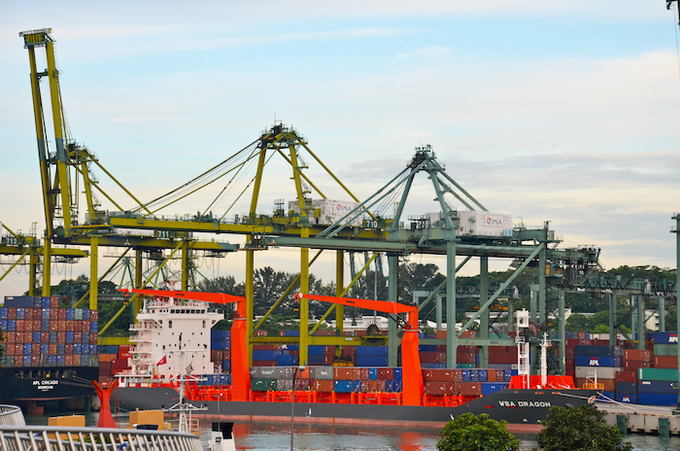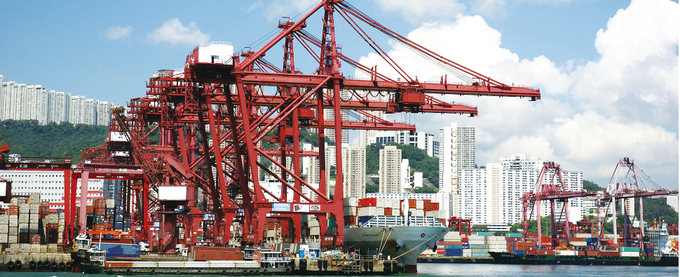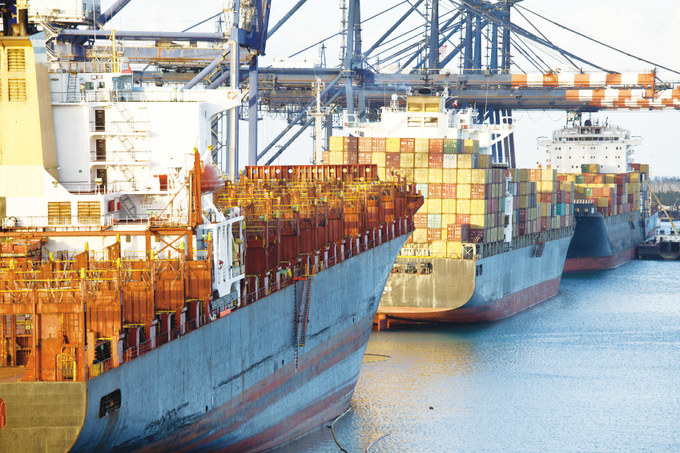
The emerging mega-carrier alliances offer opportunities and risks to the world’s leading container transshipment ports striving to reverse falling traffic, according to Drewry Shipping Consultants.
Throughput at 'Singapore' was down 5 percent in the first half of the year following a 9 percent decline, an equivalent to 2.2 million twenty-foot-equivalent units, in 2015.'Hong Kong' fared even worse, with first half volume shrinking by 10 percent following a similar decline, equivalent to 2.2 million TEUs.

The two Asian hubs have been hit by slower global growth ? world port traffic increased just 1 percent in 2015 and will grow only 1.8 percent this year, “but there are some other factors at play,” London-based Drewry said.
Transshipment accounts for around 85 percent of Singapore’s container volume and a sizable slice of Hong Kong’s, and some of their contraction is due to market shifts to nearby hubs, including Port Kelang and Tanjung Pelepas, which have grown above trend as they attract transshipment traffic from carriers and alliances.
The leading hubs have also lost business as a result of carriers replacing transshipment with direct calls. “The ports’ customers, ocean carriers, are under severe financial pressure to reduce their operational costs and some of their actions have accelerated the shift toward more direct calls at the expense if transshipment.”
Previous feeder ports are being included onto mainline services to save on costs, while the addition of more ports to weekly loops has extended the transit times of round voyages, requiring additional vessels to maintain frequency, which helps to absorb surplus capacity.
“Increased demand and new terminal infrastructure in emerging markets such as Indonesia, Vietnam and Malaysia, the bread and butter of Singapore’s transshipment activity has also helped to attract more direct services.”
The emergence of fewer but larger alliances also poses a risk to transshipment-heavy ports as it will reduce the client pool for terminal operators with business won and lost in much bigger “chunks.”

Highly integrated vessel-sharing agreements, or alliances, allow members to mitigate overcapacity by sharing the use of their larger vessels and avoid financial losses accrued by operating less-than-full ships. Slot-sharing is hardly new, but the degree of integration through alliances, and their reach, certainly is ? today, they make up roughly 90 percent of container capacity on major trade lanes. Like traditional slot-sharing, alliances are strictly operational, which means joint marketing and sales are forbidden.
The trend toward fewer services deploying larger vessels with multiple carriers pooling cargo will create winners and losers with the successful terminal operators most likely boasting strong connections to the dominant members of the alliances.
Drewry said the arrival of mega-alliances could benefit larger transshipment hubs, which have ample capacity to handle rising traffic in the near and medium term. Alliances will also be attracted by their greater connectivity and lower risk of congestion during cargo peaks.
Smaller and more fragmented transshipment ports at more at risk of losing business. “In the world of the mega-alliance, the mega-hubs are best able to compete,” according to Drewry.
(Source : www.joc.com)

















